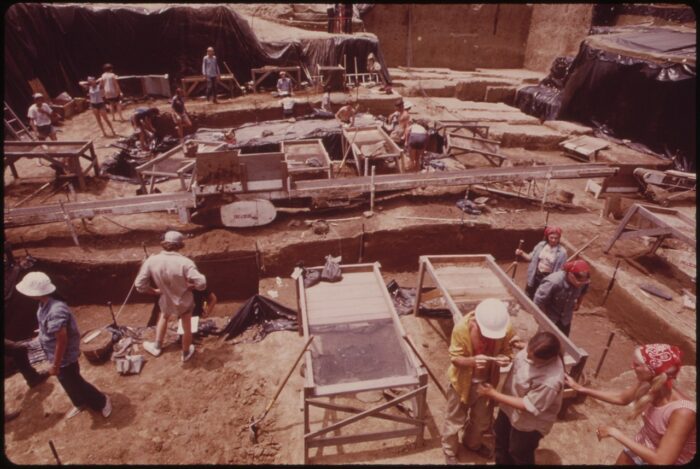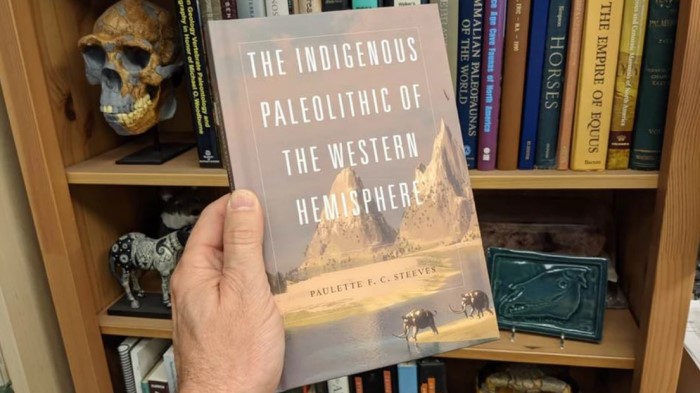June is National Indigenous History Month in Canada.
This is a time to recognize and learn about the stories, culture, and traditions of First Nations, Metis, and Inuit Peoples across the country. It is also a time to respect the resilience of Indigenous Peoples, and to acknowledge just how deep their history on this land is.
On the Canadian government's website, they refer to this history as dating back to 'time immemorial'. That means a time that was before us having any memory or knowledge of it.
On one hand, this is a way of saying "a long, long time ago." But on the other hand, it brings up a really cool question.
How old is the history of Indigenous Peoples in this part of the world?
The way that we answer this type of question is with archeology. That is the study of past human civilizations by looking at remains of materials made and used—everything from structures to clothing to tools.
And more and more, a new branch of archeology is seeking to uncover the truth behind Indigenous history. It is called Indigenous archeology, and we'd like to talk about it!
What is it?

Archeology done in North America was almost always done by settlers and didn't involved Indigenous Peoples in the process. (Wikimedia Commons)
Indigenous archeology is a field of study where Indigenous Peoples and archeologists work together to examine the past of human civilizations.
The archeologists themselves may or may not be Indigenous, but it is important that Indigenous Peoples are heavily involved in the process. That's because this type of archeology is not just about pulling objects from the ground and observing them. It also draws heavily from oral histories within Indigenous communities.
An oral history is a history that has been passed down from generation to generation through storytelling, as opposed to being written down somehow, such as in a book, on parchment, or on a tablet of stone or wood.
Why is it important?
The ancestors of Indigenous Peoples have easily lived the longest in what is now called Canada. The early European settlers arrived here 1,000 years ago, whereas Indigenous ancestors have been here for many, many thousands of years.
But for centuries, the archeology performed in North America was done by Western (European or settler) archeologists. They studied artifacts without any deep understanding of how Indigenous communities lived and worked with each other and the land. Instead, they made assumptions based on comparing Indigenous societies and histories to European ones.
These biases (beliefs informed by one's own interests and perspectives) led to a telling of history that incorrectly framed Indigenous societies as primitive, just became they were different to European ones. The great historical achievements of these societies were essentially ignored.
Indigenous archeology seeks to correct this problem by making sure that Indigenous communities are directly involved in the excavation, examination, and explanation of the artifacts found on their traditional lands.
More say, more change

The work of Indigenous archeologists like Paulette Steeves is working to change our understanding of how long people have lived on the North American continent. (tipdba.ca)
Today, these things are changing. Not only are Indigenous communities being consulted, but there are many more Indigenous archeologists and archeology groups than ever before.
Experts like Kevin Brownlee (Cree, Royal BC Museum) and Paulette Steeves (Cree/Metis, Algoma University) are helping to reveal the immense complexity and innovation behind Indigenous structures, tools, clothing, and more. And not just across North America, but all of the Western hemisphere.
Then there are field schools like Anishinabe Odjibikan, where members of Indigenous communities come together to practice archeology and teach about their past.
Recently, archeological study has questioned the long held belief that the first humans migrated from Asia to North America around 13,000 years ago. New finds have uncovered footprints and other artifacts dating back 23,000 years ago.
And Steeves has excavated numerous archeological sites that she claims show that humans have been on this continent for well over 100,000 years. Talk about time immemorial!
This is likely just the start of how these fields are changing for the better. As she said in a February 2023 interview with CBC radio: "The more diversity you have the better—in any field of academic science. We have to get to a place where there are a lot more people from diverse backgrounds in the field of anthropology and archaeology."
 Anishinabe Odjibikan is an Indigenous archeological field school based in Ontario and Quebec. (Anishinabe Odjibikan/Facebook)
Anishinabe Odjibikan is an Indigenous archeological field school based in Ontario and Quebec. (Anishinabe Odjibikan/Facebook)








